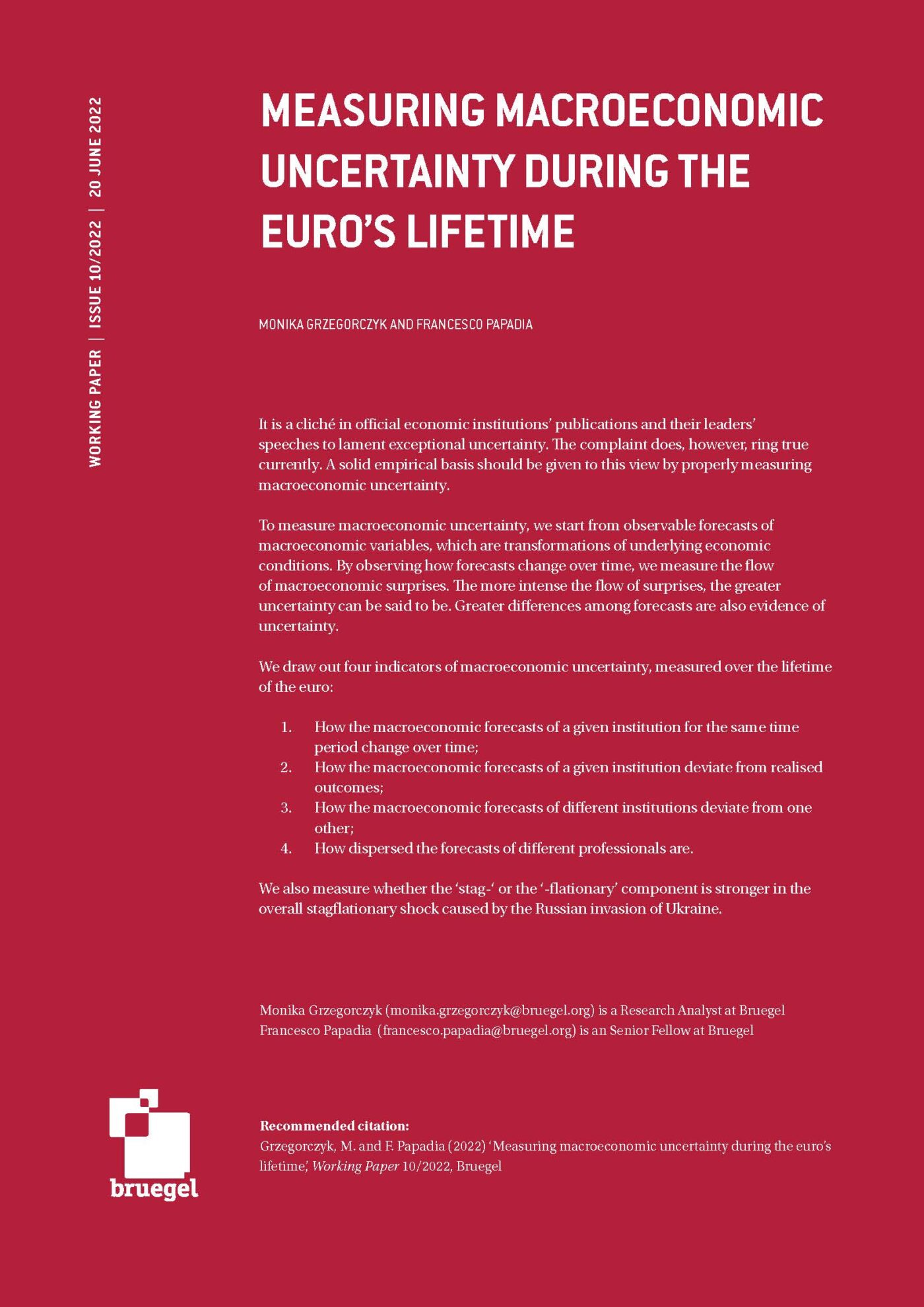Blog Post
Fact: T.L.T.R.O. is Too Low To Resuscitate Optimism
Yesterday the ECB held the first auction of liquidity under its new TLTRO programme. The take up was well below expectations, raising questions about the actual ability of the ECB to regain control of its balance sheet.
Yesterday the ECB held the first auction of liquidity under its new TLTRO programme. The take up was well below expectations, raising questions about the actual ability of the ECB to regain control of its balance sheet.
It’s the third week of September and the sky is already getting quite grey, over Frankfurt. The ECB held yesterday the first allotment of liquidity under its new TLTRO programme. It was introduced in June and it foresees two initial auctions (September and December 2014) in which banks will be able to borrow up to an initial allowance of roughly 400bn plus a number of additional leveraging operations.
Expectations on the take up in the first operation were high. A Bloomberg poll this week showed that analysts, on average, expected banks to bid for €174bn of loans in September and €167bn in a second auction in December. The actual amount allotted, however, was only 82.6 billion, i.e. less than half the average expectation for this first operation.
Actual amount allotted was only 82.6 billion, less than half of the expected for this first TLTRO operation
Results at the country level are not known in full yet, but sparse news suggest that around 46% of the total went to Spanish and Italian banks (Figure 1) . Reuters reports that ten Italian banks, including Italy’s top three lenders Intesa Sanpaolo, UniCredit and Monte dei Paschi di Siena, took a combined 23 billion euros. This represents 28 percent of the total 82.6 billion allotted, and about 30% of Italian banks’ potential allotment (of 75 billion). El Mundo reports that Banco Santander, BBVA, Caixabank, Banco Popular and Bankia took in total 15 billion, whereas Banco Sabadell and Bankinter did not participate. This represents 18 percent of the total and about 28% of Spanish banks’ initial allowance. Bloomberg reports that Amsterdam-based ING Groep NV and ABN Amro Bank NV said they subscribed for funds (but did not disclose the amount), whereas Austria’s three largest banks, Erste Group Bank AG, UniCredit Bank Austria AG and Raiffeisen Bank International AG, didn’t take part.
In light of this outcome, a number of questions forcefully ask to be answered.
First, why was the take up so low compared to expectations? Quite obviously, it is not a matter of price. The interest rate has never been so low. Actually, Mario Draghi himself stressed during the last press conference that the cut in the interest rate was also meant to signal “ to the banks that are going to participate in the TLTRO that they should not expect any further lowering in interest rate, so they should not hesitate to participate in the TLTRO because of this reason, because they could wait for a lower interest rate in the future.”
Rather than using very cheap liquidity, euro area banks are actually reimbursing it
It may be, as many suggest, that banks may just prefer to wait for the end of the ECB’s comprehensive assessment of bank balance sheets, before taking up more ECB liquidity. If this were a correct interpretation, take up in the December TLTRO should be significantly higher. The “stigma” argument was a powerful one at the height of the crisis, when there existed a liquidity emergency in some part of the euro area banking system and therefore borrowing at the ECB facility could have a bad signalling effect. But the current situation is very different and the “liquidity emergency” (with its implications) is an old memory. Not to mention that the ECB assessment is almost complete (and run on balance sheet data of end-2013), so it’s not obvious how borrowing now could affect the results.
The real reason may actually be more of a thorn in the side for the ECB. While it is true that interest rates are at record low, banks in the euro area have had the possibility to borrow very cheap liquidity for years, by now. But rather than using it, they are actually reimbursing it. Figure 2 below shows the evolution of excess liquidity outstanding in the euro area together with what appears to be the main factor behind its shrinkage: anticipated repayments by banks of the funds they borrowed at the ECB under the previous LTRO. Banks have been repaying ECB liquidity since february 2013. Interestingly enough, between June (when Draghi announced the TLTRO) and now, repayments have accelerated, probably with the objective to “swap” the repaid LTRO funds for TLTRO ones.
There is not an exogenous shortage of cheap liquidity in the euro area right now. But in the South of the euro area – where non-performing loans are high – banks would need to discount high expected default rates (and relative provisions). Moreover, lending to SMEs implies high risk weights and, consequently, capital charge. The profitability of borrowing very cheaply at the ECB to lend to the private sector (especially SMEs) is therefore not guaranteed, and the incentive of banks to take part in the TLTRO is not guaranteed either.
This however raises important and uncomfortable questions for Frankfurt, about the actual ability to deliver on the commitments recently taken in the fight against low inflation. During the last press conference, Mario Draghi in fact said that the aim of the ECB’s measures is to bring the size of the balance sheet back to the level it had in mid-2012.
From that peak (3 trillion) the ECB’s balance sheet has shrunk by about 35%, mostly due to the aforementioned reimbursement of LTRO funds. Bringing it back would require a boost of about 1 trillion.
Bringing the ECB balance sheet back to peak would require a boost of about 1 trillion
Speaking with Bloomberg, vice-president Constancio said that “within the whole package of measures that we have taken, in terms of the effect they can have on our monetary base, the bulk will come from the targeted longer-term refinancing operations”, which isn’t surprising in light of both the reduced size of the ABS market in Europe and the difficulties that the ECB is facing in its attempts to broaden the range of instruments it could buy.
But is it realistic? Figure 2 shows that the 400 billion available for the first two TLTRO operations are barely enough to cover the reimbursement of the outstanding 372 billion of old LTROs. This means that the net effect of these two initial operations on the ECB balance sheet will be a small additional 28 billion. Therefore, even assuming full take up in the December operation, the participation to the second phase of the TLTRO – which is based on banks meeting certain net lending benchmarks – looks crucial for the scheme to be sizable. And as far as this is concerned, we already pointed out that one important issue is still pending, i.e how banks will be prevented from using the funds borrowed now and in December for purposes different from lending.
There are a number of factors possibly playing a role in the low take up of this TLTRO operation. In addition to those already mentioned, the ECB itself might have modified the reaction function of banks, with its announcement of an ABS programme. Knowing that the ECB is going to buy ABS starting soon, and knowing that – at least for the moment – the ECB is unlikely to buy ABS that it would not accept as collateral, banks might prefer to wait and sell those ABS to the ECB rather than just pledge them now.
T.L.T.R.O. may soon become famous as an acronym for “Too Low To Resuscitate Optimism”
Certainly, we need to wait until December to have a clearer view on the matter. But there is something that can and should be pointed out already. These results show yet one more time the risk of doing a “(not so) unconventional” monetary policy à la ECB: it is ultimately outside the central bank’s control, because it is driven by banks’ demand. Regaining control of the balance sheet with measures that are less demand-driven is a prerequisite to make an impact, but if the ECB’s great expectations are predominantly put on the refinancing operations, this might not happen. And the T.L.T.R.O. may soon become famous as an acronym for “Too Low To Resuscitate Optimism”.
Republishing and referencing
Bruegel considers itself a public good and takes no institutional standpoint. Anyone is free to republish and/or quote this post without prior consent. Please provide a full reference, clearly stating Bruegel and the relevant author as the source, and include a prominent hyperlink to the original post.







